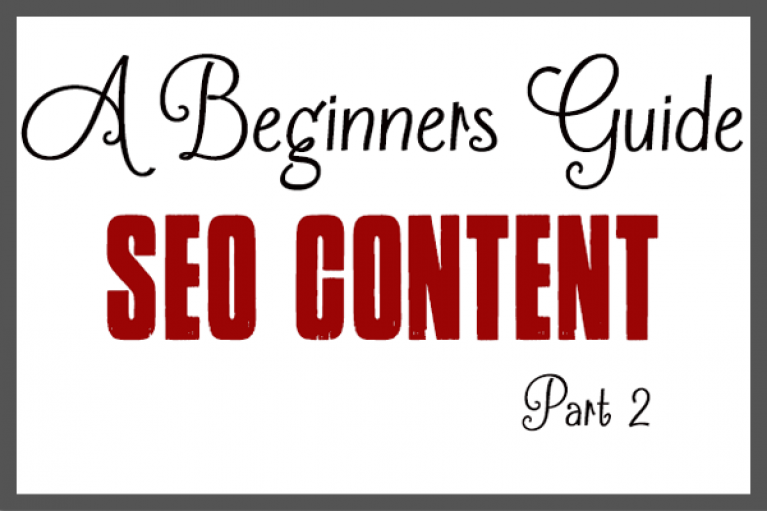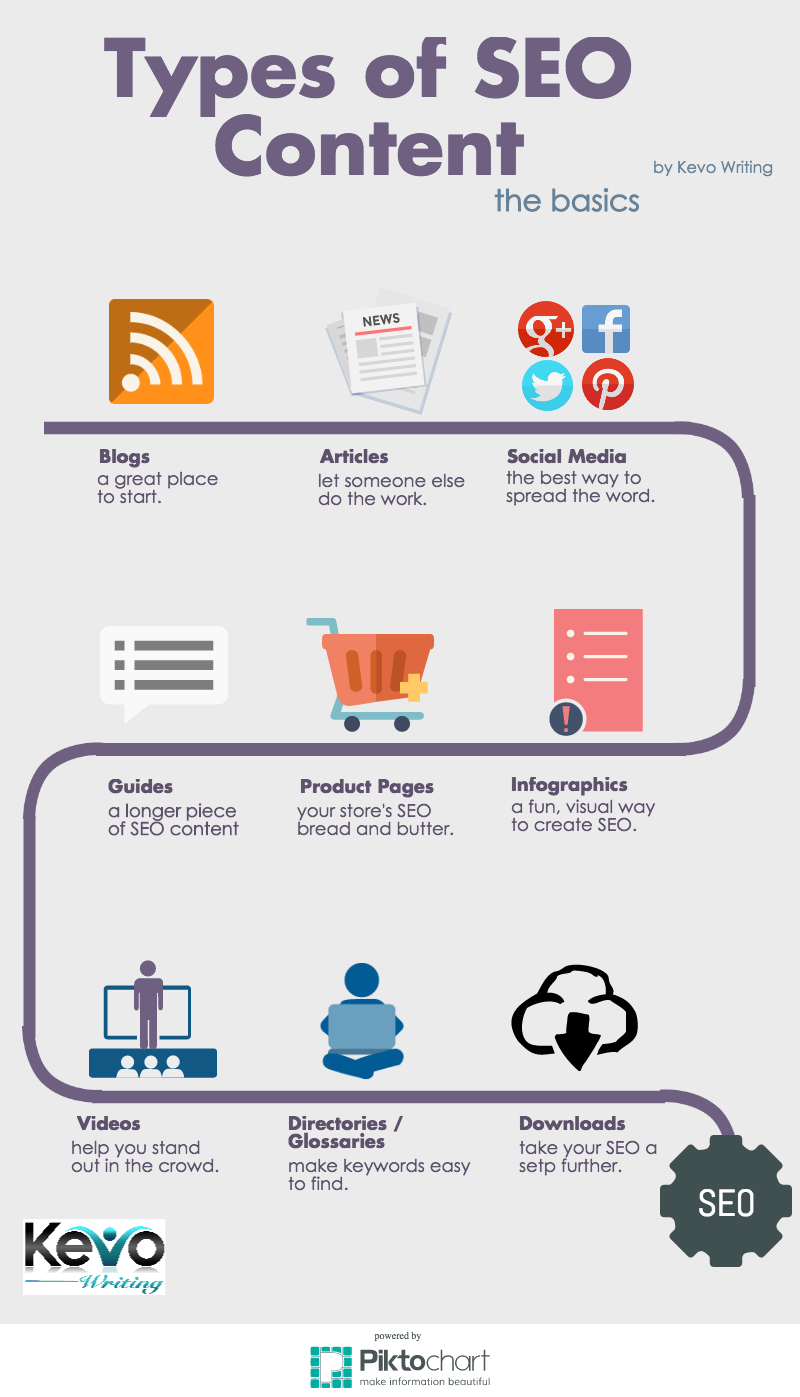Last blog we looked at the four key concepts to keep in mind when writing SEO content. Now, we’re going to dive in and look at the various types of SEO content.
You might be surprised, you have more opportunities than you think.
SEO content can include any and all of the following:
- Blogs: A great place to start is with a great blog. A well written and regularly updated blog can provide you with endless opportunities to craft SEO content. What’s great about a blog? It can be anything you want it to be. You can expand your keywords and really hone-in on your target audience within your blog. Even better, blogs can easily vary. Types of blogs, a few are included below:
- Lists: A list is literally a type of blog or article that provides content in a list format. These are extremely popular, easy to write, and very SEO friendly. “10 Reasons SEO Content Is Your Friend” “101 Ways to Tell Someone Your Love Them” A list can make your content easy-to-read and easy-to-find. A list also gives you an easy framework. You’ll see lists frequently on Kevowriting.com
- Step-by-Step: A step-by-step blog lets you walk your audience through an idea, concept, or plan one step at a time. These types of blogs are typically numbered and focus on a “how-to” subject. “10 Steps to Writing Great Content” “How To Get a Date in 4 Parts”
- Ideas: This type of blog is similar to what you’re currently reading; it gives your audience practical ideas and solutions that they can use immediately. This type of blog can encompass any number of things, but the key is you have to give your audience something that they can really use.
- Articles: These are news articles, interviews, or feature pieces. An article usually doesn’t show up on your website, unless you link to it. Instead, you can write an article about your company for Huffington Post or your local new station can write an article about you. Articles are fantastic, although they can be more difficult to create than a blog because they require an outside source.
- Social Media: More-and-more, social media is becoming vital to SEO. When you use social media, you ensure that your content and website reaches a much wider audience. Search engines, such as Google, also favor particular social media websites and will search for your company’s name on those sites to help you move up the search engine ladder.
- Infographics: Infographics are awesome! Who doesn’t love a great, visual representation of a concept or idea. Infographics are easy to share on social media, easy to plug into a blog, and easy to host on a separate website page. You’ll find an infographic at the end of this blog which illustrates the types of SEO content we’re talking about.
- Product Pages: If you have a product, this is your most important SEO content page. This is your sweet spot, your bread and butter. If you’re selling fashion flip flops, make sure your store is SEO friendly in a big way from product names to product descriptions to product layout.
- Guides: You’re actually enjoying this piece of content right now. A ‘guide’ is a longer piece of content that provides your audience with instructions, information, and/or know-how on a topic that is vital to your company. A guide is also a great way to slip in SEO keywords (see what I did there). A guide can appear on its own resource page of your website, within your blog, on your home page, or within your services.
- Videos: Never underestimate the power of video. There’s a reason why YouTube is such a powerhouse and why we still watch TV. A great video can serve you better than a well written blog or article. Generally, there are fewer videos online and so you can stand out in the crowd by crafting and sharing great video content. It doesn’t take much either. Grab your iPhone, step outside, and start recording. It doesn’t need to be professional quality to be SEO friendly. It just needs to have great content!
- Glossaries / Directories: These allow you to specialize based on what your website and company focuses on. With a glossary, you can create a page with keywords and terms that fit your industry, providing endless SEO opportunities. With a directory, you can link to other websites and resources that inform your website and topic—your fashion flip flop store can have a webpage dedicated to helpful wedding websites.
- Downloads: Sometimes you can’t fit all of your content on your website. Downloads are great resources to provide additional keyword content and SEO. Downloads also give your clients/customers a little something extra, a thank you for being a part of your company.
The infographic below is an easy way to remember what type of content helps you achieve great SEO.






















